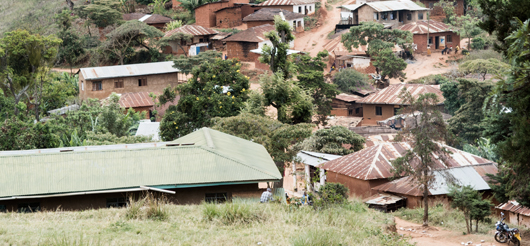Indigenous communities and territories and their role in land administration
The concept of territory
Programmes that are active in Indigenous Communities and Territories (ICT) should bear in mind that land administration in these areas involves more aspects than in other areas. Social, symbolic, cultural and economic factors should be taken into account, along with different forms of government. Land administration in ICT should therefore refer to the concept of territory.
In Convention 169 of the International Labour Organization1 on Indigenous and Tribal Peoples, the concept of territory allows rights to the ancestral lands of indigenous peoples to be established. Territory refers to the geographical perimeter which has significance for the people who inhabit it, combining the symbolic, economic, social and cultural factors which historically formed their cultural and ethnic identity.
Other authors define territory as “the portion of the terrestrial surface area appropriated by a social group to ensure that they can reproduce and meet their vital needs”2. This definition stresses four aspects:
- The territory can incorporate any portion of the terrestrial surface area, and thus transcends the concept of a border. Not all geographical spaces are territories and a territory can include several geographical spaces.
- An appropriate form, that is to say the construction of an identity around this territory. There are many forms of specific appropriation, from naming to border demarcation; there are also very abstract or idealized forms of appropriation (for example the territory of a diaspora, of nomads or of Roma), or an “archipelago” when, for example, the social group uses surface areas on several ecological levels.
- The territory relates to a given social group. The same place can correspond to several overlapping territories, appropriated compatibly or incompatibly by different social groups.
- The territory is defined according to the possibility of ensuring social reproduction, in other words, the same territory has specific functions which are fundamental for its maintenance.
There is another definition based on the difference between land and territory, where land relates to an individual right and territory to a collective right:
“Territory is the right of peoples and land is the right of individuals. Territory is under the cultural influence and political control of a people […] gives the right to economic use without interference by third parties. Today, when indigenous peoples claim rights they refer […] to control over what happens socially in their way of life, above all to the exploitation of resources in these spaces”.3
Land administration powers
Land administration in ICT will depend not only on the forms of management and internal government of each community, but also on the powers that central government grants to these communities. There are several forms of legal recognition of territorial rights and their types of government. In this respect, the FAO groups forms of recognition into three methods of granting title to indigenous territories:
- Titling methods that recognise collective control in perpetuity of land with the ability to apply their own forms of local government (Mexico, Nicaragua, Panama).
- Titling methods that recognise for an unlimited term the right of enjoyment of land and renewable natural resources and to maintain their internal government systems (Costa Rica).
- Community or intercommunity titling methods in the framework of agrarian legislation or under other civil code legislation. These forms of titling are carried out through the creation of cooperatives or civil associations as there is no legal recognition of the community or territory itself (Honduras and Guatemala).
There are intermediate forms of recognition of tenure rights, which consist solely in the recognition of the management and collective right of enjoyment of land by a community, as in Guatemala. This form of administrative recognition by the cadastral authority is not equivalent to a title deed, but it protects the community from the individual subdivision of its lands during cadastral mapping and updating processes.


